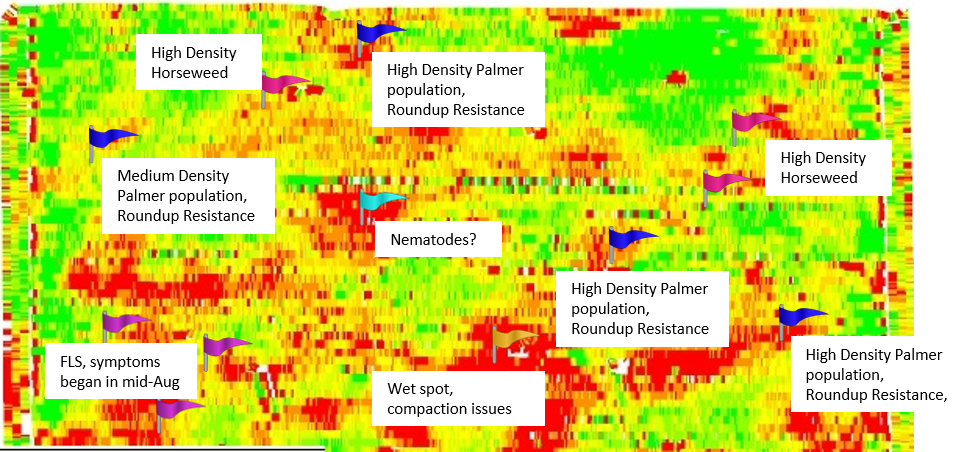With things finally starting to dry out across much of the state the 2016 harvest is in full swing for many growers. Getting harvest completed is obviously the top priority, but it is also time to start preparing for next season. The first step in planning for next season is making notes on this season’s crop. A weed and disease map can help you prepare weed- and disease-management plans for subsequent crops.
Your weed and disease map could be as simple or complicated as you wish. You could make notes on NRCS field maps by hand or you could use GPS technology to make an electronic map that is extremely accurate. Some yield monitors allow “flags” or other codes to mark areas in the field. The combine seat is a great place to see problem spots in your field and marking them on the go is multi-tasking at its finest.
For weed mapping, you should include weed identity, density, and any suspected herbicide resistance. For disease mapping, you should include which diseases were present, when you saw symptoms, and what level of injury was observed. You can also include other important notes on these maps, such as areas of suspected nematode problems or compaction issues. The more detail you add to these maps, the better you will be able to plan for future crops.
Once maps are completed, plans for 2017 can begin. These maps should guide your decisions on variety selection, seed treatments, herbicide plans (including burndown and pre-emergents), tillage, and fungicide applications. Trouble spots (for weeds or diseases) this year are likely to be a problem in subsequent years. By knowing what to expect, you can better plan for these problems.







